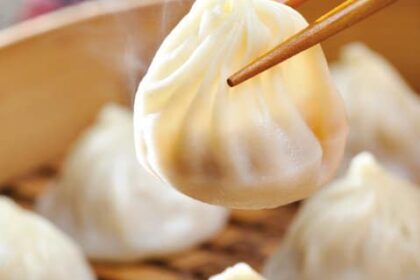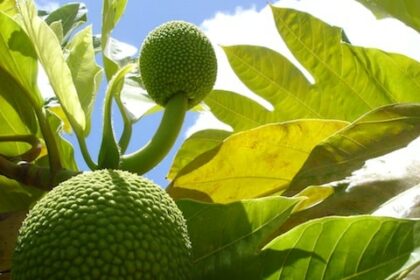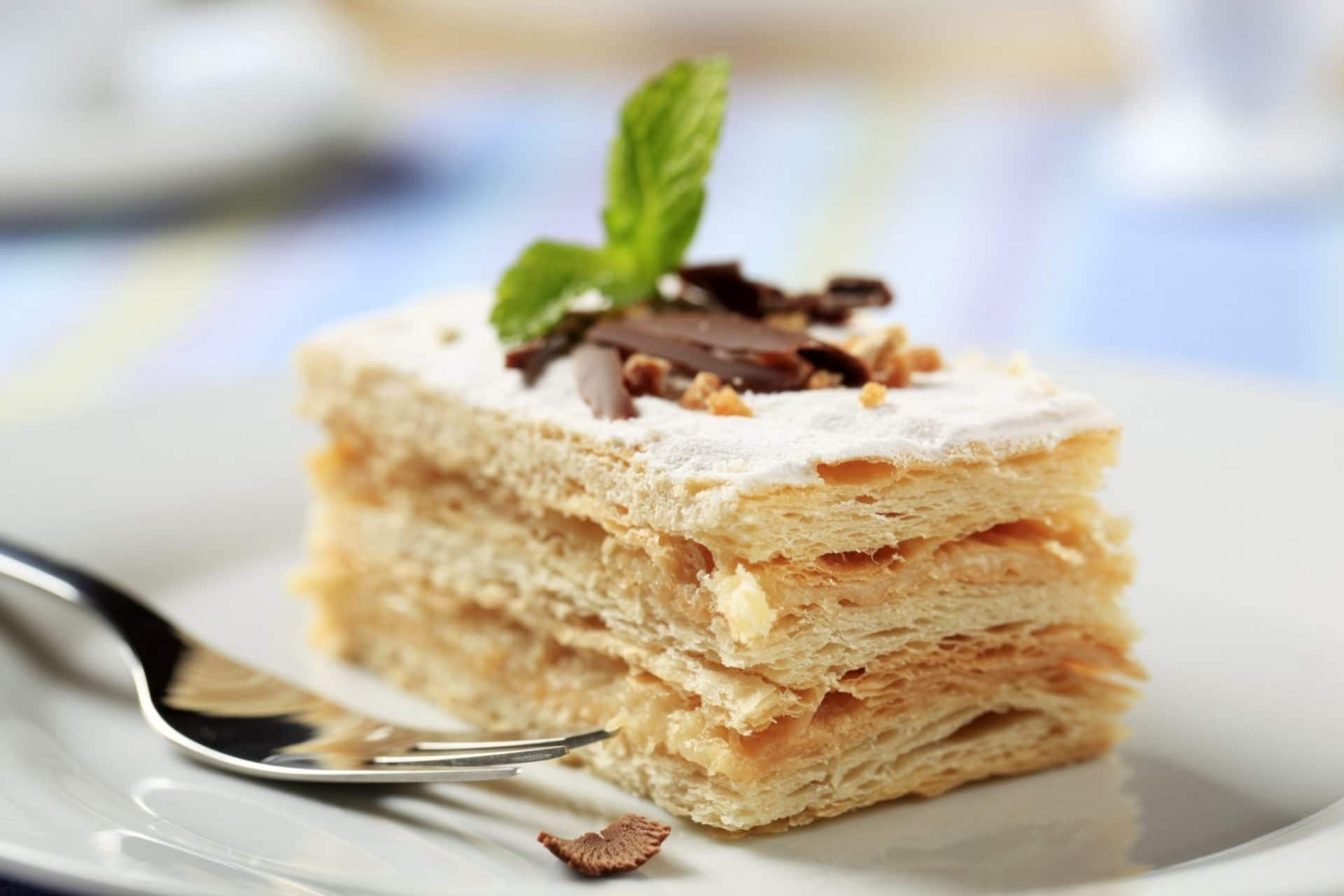
Flaky, crumbly and creamy all at once, the decadent French dessert the millefeuille — which translates as “a thousand leaves” — is one of the most delectable pastries out there. Known in the English-speaking world as a custard slice, a Napoleon or a vanilla slice, the millefeuille is sweet without being overly sugary, complex without being overwhelming, and somehow paradoxically light and rich at the same time.
Crafted from thin layers of pastry, cream and a topping of cocoa, vanilla icing or almond fondant, the concoction is a staple in all good pâtisseries, and a favorite of the discerning French.
So where does the millefeuille come from?
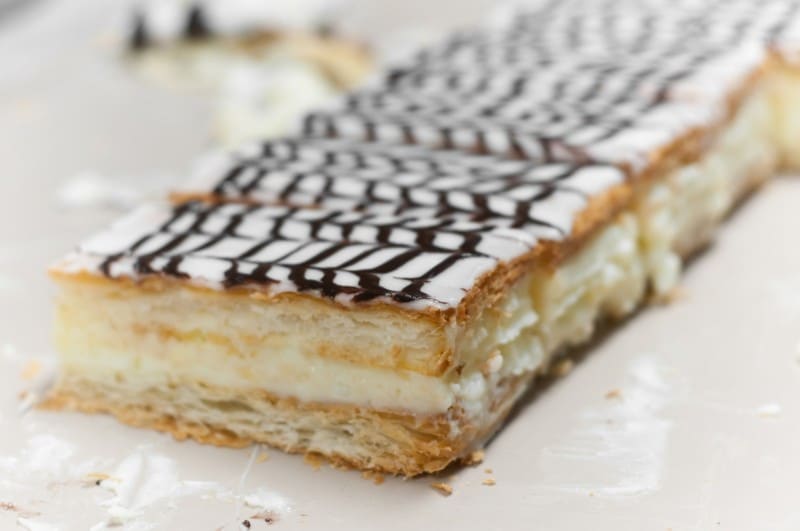
Millefeuille Or Napoleon: Historical Ambiguities
Despite its widespread popularity, we know very little about the millefeuille’s background, and its exact origins are unknown. Mention of the millefeuille dates back to 1600s France, when gastronomic chronicler François Pierre de la Varenne recorded it in an early cook book. However, a century later, renowned chef to the aristocracy and pioneer of French haute cuisine Marie-Antoine Carême enigmatically referred to it as an “ancient recipe”. At the time, the dessert was more poetically named gâteau de mille feuilles, or “cake of a thousand leaves.”
The alternative name, Napoleon, refers not to France’s 19th-century emperor (although it would be just like him to extend his personal propaganda strategies to pastries), but to uncertain connections with the Italian city of Naples. However, whether the dessert was originally Italian or French is contested. There is even some suggestion that the millefeuille owes its layered design, though not its ingredients, to the Hungarian caramelized dessert, Szegedinertorte.
The Perfect Millefeuille In Paris
One thing’s for sure, however; when in France – especially Paris – a visit to a fine millefeuille purveyor, like Ladurée (75 Avenue des Champs-Elysées) or Angelina (226 Rue de Rivoli) is a must. There are countless restaurants, tearooms and boulangeries in the French capital which serve up sublime versions of the pastry. The more traditional places will stick to a classic layering of puff pastry and pastry cream, topped with vanilla icing or a light dusting of cocoa. If you’ve never experienced a millefeuille before, this kind is the first you should try.
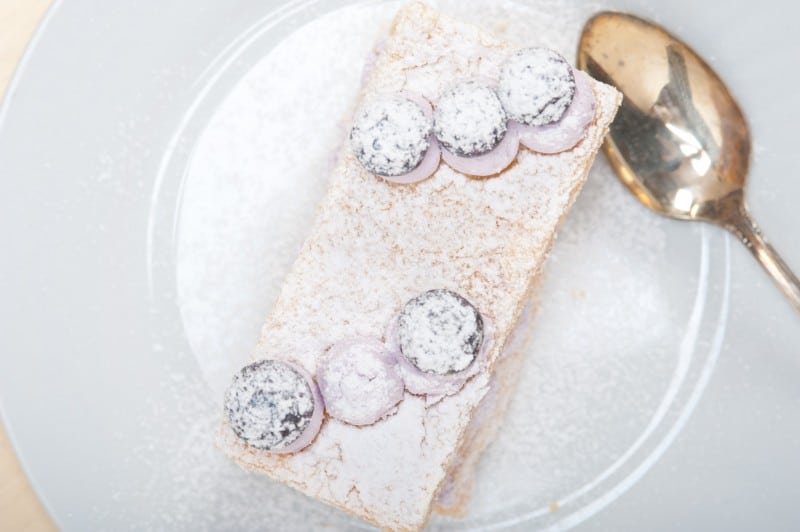
However, modern millefeuille makers are beginning to experiment with variations on the classic recipe. Some pâtissiers nestle fresh berries between the layers of cream. Still others are incorporating chocolate shavings. Others work with hints of caramel.
In any case, if you’re looking for the perfect millefeuille experience, head to unrivalled pastry heaven Ladurée. These days, there are multiple Ladurée destinations around the city, but the only true choice is their original location on the rue Royale, in the picturesque first arrondissement. Cosy up to a pot of tea at one of their tiny little tables, surrounded by gilt mirrors and rococo paintings, and order their scrumptious hazelnut rendition. While not the cheapest available in Paris, Ladurée’s take on the millefeuille is a dainty mix of feathery puff pastry sheets held together by decadent, nutty cream that makes you understand the expression “melt-in-your-mouth.” Magnifique.
What’s your favorite French pastry? Please share in the comments below.
Recommended Reads:
Patisserie Made Simple: From Macarons to Millefeuille and more by Edd Kimber
Mastering the Art of French Cooking by Julia Child
A Kitchen in France: A Year of Cooking in My Farmhouse by Mimi Thorisson
Also Check Out:
A Delicious Introduction To Iconic Australian Desserts [Recipes Included!]
Delicious Reading: Top Ten Blogs For Foodies
Why You May Want To Bring Fermentation To Your Home Kitchen Today (Recipe Included!)
Enjoyed this post? Pin it for later!
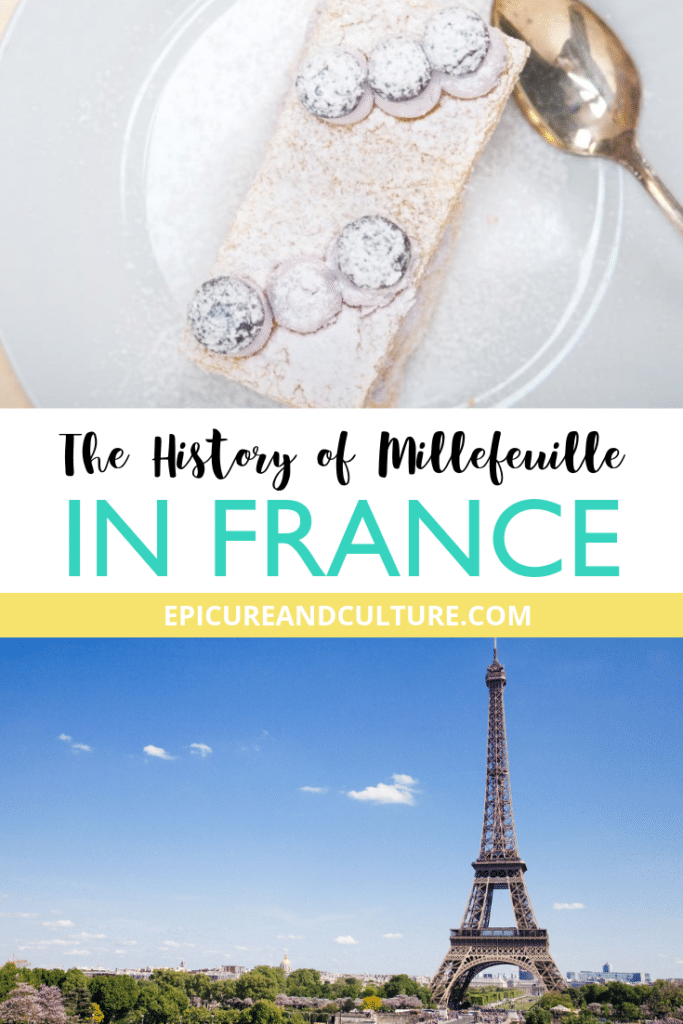
Jessica Festa
Latest posts by Jessica Festa (see all)
- A Culturally-Immersive Adventure In Mongolia’s Altai Mountains - Jul 8, 2023
- This Recipe Sharing Platform Supports Women In The Culinary Industry (Labneh Recipe Included!) - Nov 5, 2020
- Hiking The Mohare Danda Community Eco-Trek In Nepal - Jun 3, 2020
- 6 Important Questions For Choosing A Responsible Yoga Retreat - May 18, 2020
- How To Create & Grow A Profitable Blogging Business (Ethically) - Jan 18, 2020


